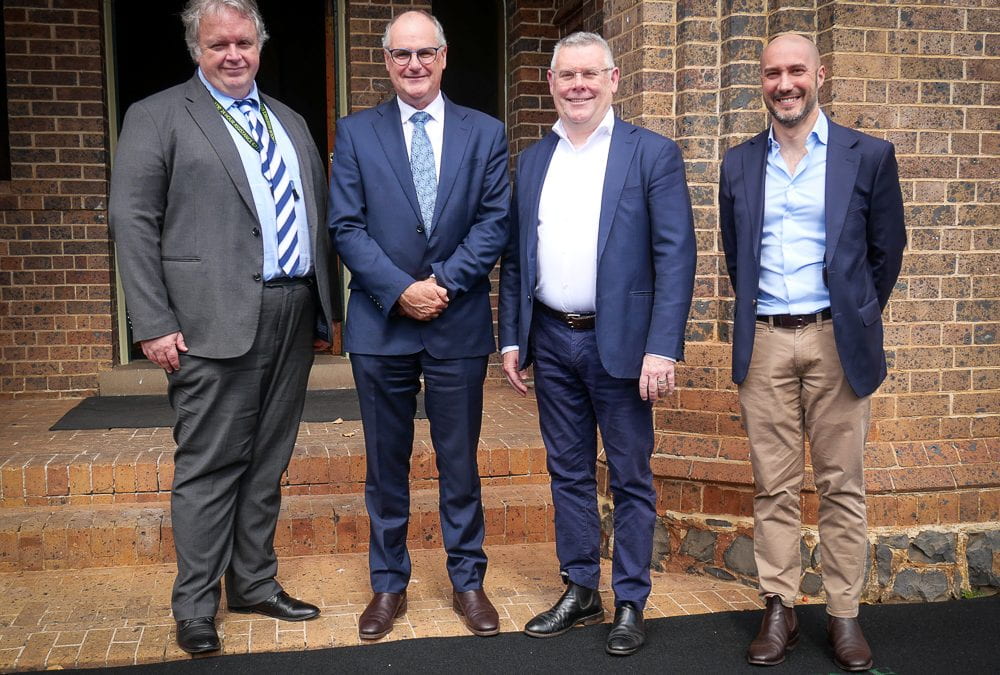Image: DVCR Chris Armstrong; VC Chris Moran; Federal Minister for Agriculture, Fisheries and Forestry Senator the Hon Murray Watt and Deputy Secretary Matt Lowe.
UNE’s agricultural research and industry partnerships were on display yesterday as Federal Minister for Agriculture, Fisheries and Forestry Senator, the Honorable Murray Watt, dropped by as part of his whistle-stop visit to Armidale.
Accompanied by Vice-Chancellor Professor Chris Moran and Deputy Vice-Chancellor Research Professor Chris Armstrong, Minister Watt visited UNE’s Centre for Animal Research and Teaching (CART), a unique facility supporting a wide variety of animal research projects including methane emission mitigation in livestock production and the impact of livestock management on animal welfare.
UNE’s expertise in agriculture and environmental and rural science research has made it a preferred partner for both government and industry resulting in numerous collaborations over the years. Minster Watt had opportunity to learn more about how UNE’s researchers apply their knowledge, expertise as well as best practices to help foster innovation in agricultural techniques, technologies, and management practices, with the aim to increase productivity, efficiency, and sustainability in the region’s agricultural sector.
During the visit Minister Watt met with CART Director Justin Bailey and Associate Professor Fran Cowley, member of the UNE Ruminant Research Group, to learn more about their research. Fran is currently working on high-profile projects as part of the Zero Net Emissions Agriculture Cooperative Research Centre (ZNE-Ag CRC) while Jusin is responsible for the strategic direction and overall management of CART to support research.
UNE’s involvement in the ZNE-Ag CRC is concentrated in two multi-million dollar research programs, Low-Emissions Plant Solutions and Towards methane-free cattle and sheep, aimed at developing solutions to reduce methane emissions in livestock production, including the development of nutritional supplements and pasture to inhibit methane emissions, and genetic selection tools for cattle breeding.
Photo gallery of visit










